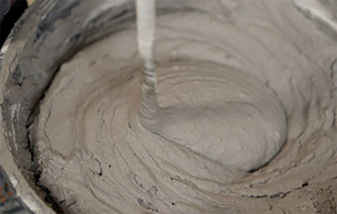
Dec . 05, 2024 03:38 Back to list
Solubility Characteristics of Hydroxypropyl Methyl Cellulose in Various Solvents
Understanding the Solubility of Hydroxypropyl Methyl Cellulose
Hydroxypropyl methyl cellulose (HPMC) is a versatile chemical compound that serves as a vital ingredient in various industries, including pharmaceuticals, food, cosmetics, and construction. Its unique properties, particularly its solubility in water, make it invaluable for a variety of applications. This article seeks to explore the solubility of HPMC, the factors affecting it, and its practical implications.
What is Hydroxypropyl Methyl Cellulose?
Hydroxypropyl methyl cellulose is a semi-synthetic polymer derived from cellulose, the natural polymer found in plant cell walls. By modifying cellulose with hydroxypropyl and methyl groups, HPMC combines the best properties of both water-soluble and water-insoluble compounds. The result is a white or off-white powder that has excellent film-forming capabilities, thickening properties, and binding abilities. HPMC is primarily used in situations where water solubility is critical, such as in the formulation of pharmaceuticals, personal care products, and various food items.
Solubility Characteristics
The solubility of HPMC in water is largely dependent on its degree of substitution (DS). The DS refers to the average number of hydroxyl groups on the cellulose chain that have been replaced with hydroxypropyl and methyl groups. Generally, HPMC with a higher DS tends to be more soluble in water. The solubility can be classified into three categories
1. Fully Soluble HPMC These products dissolve readily in cold or hot water and result in a clear, viscous solution. 2. Partially Soluble HPMC This type exhibits moderate solubility and may require warming for complete dissolution. 3. Slightly Soluble HPMC These are less soluble and often require specific conditions, such as high temperatures or the presence of certain solvents, to dissolve effectively.
Additionally, the viscosity of the solution formed also varies, influenced by the concentration of HPMC and its inherent properties. This means that HPMC can be tailored for specific applications where a certain viscosity is required.
Factors Affecting Solubility
hydroxypropyl methyl cellulose solubility

Several factors can influence the solubility of HPMC
1. Temperature Increased temperatures generally facilitate better solubility. Hot water often helps dissolve HPMC more quickly than cold water, which can form lumps if not adequately mixed. 2. Concentration The amount of HPMC in a given volume of water affects its solubility. Higher concentrations can lead to more viscous solutions, which may appear less soluble due to the increased thickness.
3. pH Levels HPMC is mostly neutral, but extremes in pH can affect its solubility. Alkaline or acidic conditions may alter the structure of HPMC, impacting its ability to dissolve in water.
4. Ionic Strength The presence of salts in the solution may also affect solubility. Ionic compounds can disrupt the hydrogen bonding that HPMC relies on for solubility.
Practical Applications
The solubility of HPMC plays a crucial role in determining its application across various sectors. In the pharmaceutical industry, for instance, HPMC is widely used in tablet formulations as a binder or coating agent, utilizing its solubility properties to ensure controlled release of active ingredients. In the food industry, it's used as a thickening agent in sauces and dressings, providing desirable textural properties.
In the construction sector, HPMC is an essential component in tile adhesives and cement-based materials, where its water retention properties enhance workability and flexibility.
Conclusion
Hydroxypropyl methyl cellulose is a remarkable compound whose solubility properties facilitate its use in numerous applications. Understanding the factors that influence its solubility can empower manufacturers to tailor formulations to meet specific needs across different industries. As we continue to explore and innovate with HPMC, its importance in modern formulations remains undeniable, contributing to advancements in technology, health, and everyday products.
-
Versatile Hpmc Uses in Different Industries
NewsJun.19,2025
-
Redispersible Powder's Role in Enhancing Durability of Construction Products
NewsJun.19,2025
-
Hydroxyethyl Cellulose Applications Driving Green Industrial Processes
NewsJun.19,2025
-
Exploring Different Redispersible Polymer Powder
NewsJun.19,2025
-
Choosing the Right Mortar Bonding Agent
NewsJun.19,2025
-
Applications and Significance of China Hpmc in Modern Industries
NewsJun.19,2025







